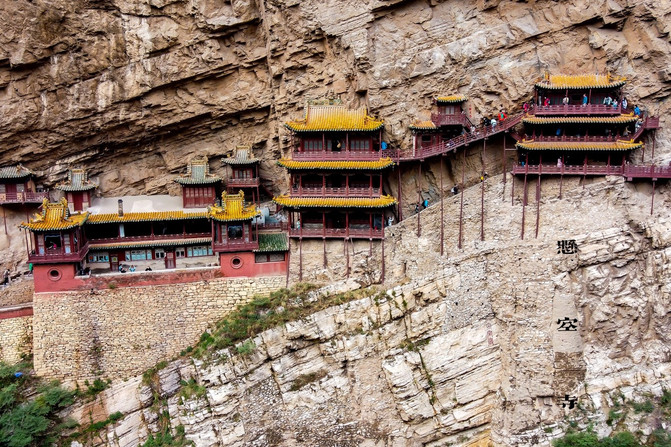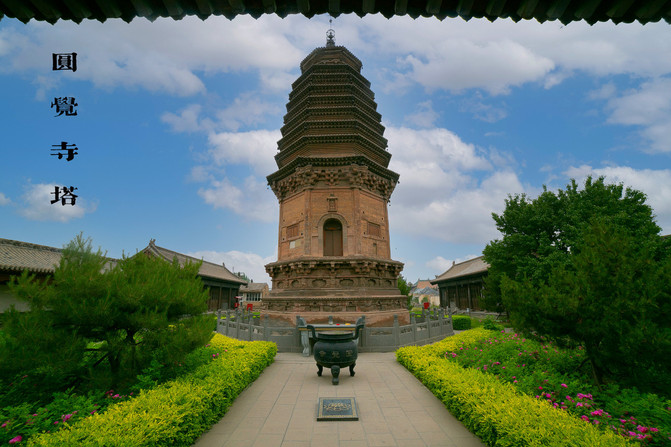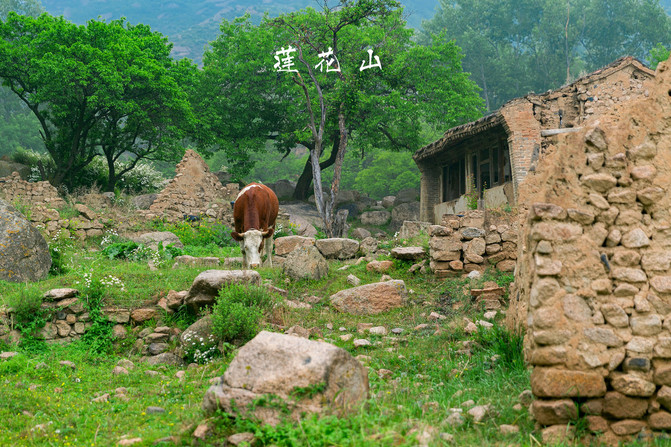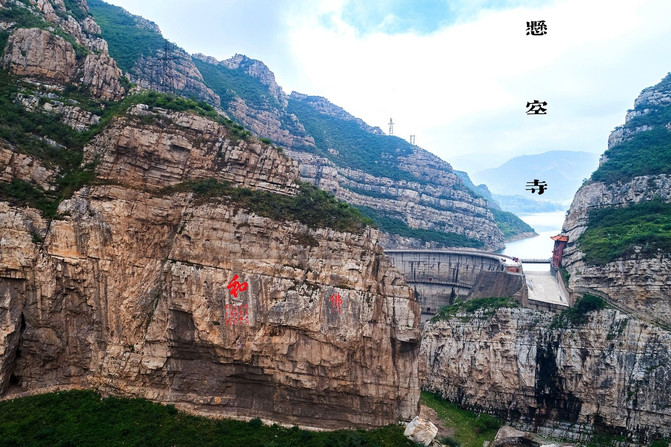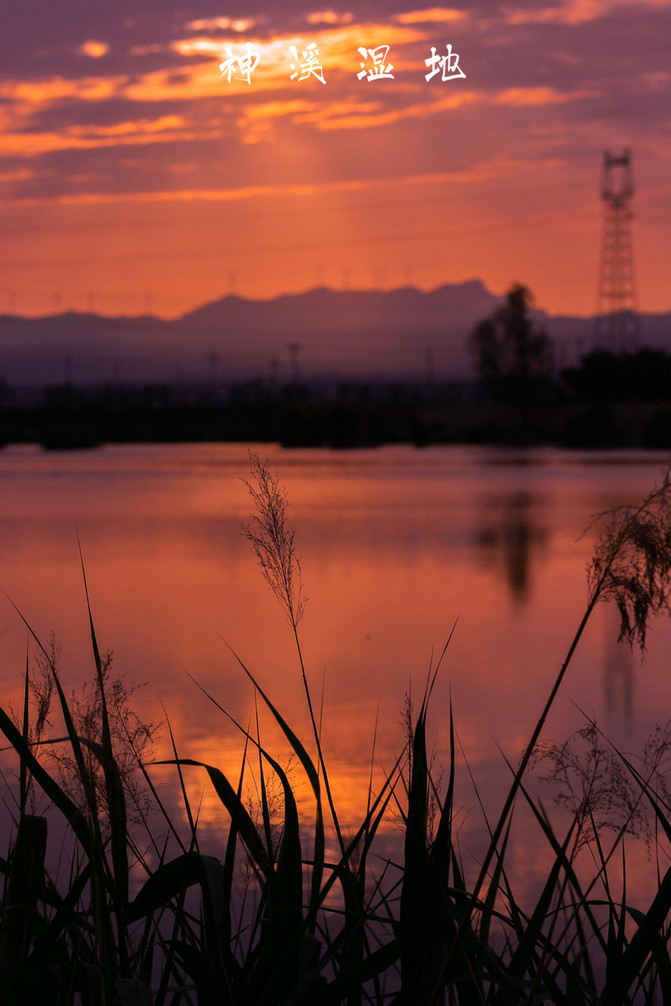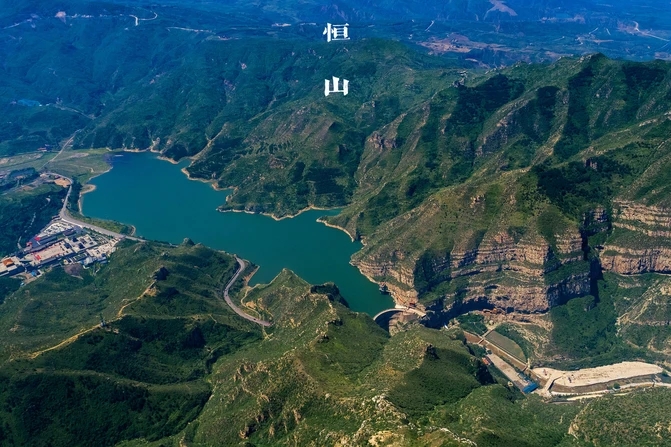
A Two – day Trip to Hunyuan, Shanxi
Date of Update: June 19, 2021
Duration: 2 days
Time: June
Average Cost per Person: 2000 yuan
Companion: Friends
Activities: Food tasting, photography, self – driving, cultural exploration, free travel
Introduction
Hunyuan, an ancient county in Shanxi, is like a dream that has lasted for a thousand years. The vicissitudes of history have left countless precious heritages on this magical land.
North Yueheng Mountain stands with magnificent peaks. The Hanging Temple has flying plank roads and winding corridors. No matter when you come, this ancient city of the Northern Wei Dynasty will always surprise you.
Apart from the well – known attractions, Hunyuan also has hidden paradises in the mountains. Lianhua Mountain is hidden in the clouds, looking like a graceful maiden. Qianfo Ridge is covered with exotic flowers and plants on the cliffs, a natural wonderland.
With a long history and outstanding people, Hunyuan is rich in historical and cultural relics. The Yong’an Temple and Yuanjue Temple built in the Jin Dynasty have magnificent architectural arts and the lingering sound of Buddhist chants, filling the land with a strong Buddhist atmosphere.
The ancient streets of Hunyuan are full of tranquility, and the state yamen is well – arranged and exquisitely structured. Many outstanding people have emerged from this place. Walking here, you can feel the long history of Chinese civilization.
There are endless cultural stories and historical secrets, as well as beautiful scenery. The Qiaomai River Air Prairie is covered with green grass, and the Shenxi Wetland has sparkling water. It’s like a dream, and every step in Hunyuan reveals its beauty.
Yong’an Temple
Among the numerous temples in Shanxi, Yong’an Temple in Hunyuan may not be widely known. However, it has four remarkable features: architecture, calligraphy, murals, and statues. Its legendary past and present made me, a mural enthusiast, look forward to this trip.
On my previous visit to Hunyuan, I only went to Hengshan and the Hanging Temple. This time, I finally had the chance to make up for the regret, so I put on my carefully prepared Ming – style Hanfu.
The temple was initially built in the Jin Dynasty but was later destroyed by fire. In the early Yuan Dynasty, Gao Ding, the governor of Yong’an Army, returned to his hometown and converted to Buddhism. He invited Master Guiyun to preside over the donation for the reconstruction. Since Gao Ding’s official position was the governor of Yong’an Army and he was also known as the Yong’an Hermit after returning home, the temple was named “Yong’an Temple”.
The construction of the temple was a 40 – year – long arduous process and was basically completed in the generation of Gao Ding’s grandson. In the second year of the Yanyou period of the Yuan Dynasty, Gao Pu, Gao Ding’s grandson, donated money to build the “Dharma Transmission Hall” in the temple. So the existing Dharma Transmission Hall is a relic from the Yuan Dynasty, while the rest were built in the Ming and Qing dynasties.
The Dharma Transmission Hall uses the traditional Chinese architectural technique of combining wooden frames with brackets. It is five bays wide and three bays deep, with a single – eave hip – roof. The middle part of the roof is covered with yellow glazed tiles, and there are two big characters “Zhuangyan” at the left and right ends under the eaves.
Yong’an Temple is a large – scale venue for the “Water and Land Dharma Assembly” for超度 all sentient beings. Its religious culture combines Tibetan Buddhism, Han Buddhism, Taoism, Confucianism, Shamanism, and Nestorianism of the Yuan – era Mahayana Buddhism.
I have seen many ancient murals, but the murals in the Dharma Transmission Hall of Yong’an Temple are truly shocking. The large hall, empty of statues due to historical reasons, seems to exist only for the magnificent murals on the four walls and in the bracket eyes. The mural area in the hall is 186.912 square meters. The scenes depicted are grand, and the paintings are delicate. They are among the few existing water – land temple murals from the Yuan and Ming periods in China, with extremely high cultural and historical research and protection values. The ten Mingwang painted on the back wall are huge in size, with strange shapes and strong, smooth lines. It is said that Mingwang often appears with a ferocious face to wake people up from their ignorance. However, the artistic image of the Immovable King Mingwang in the Dharma Transmission Hall is different from the general description and is a masterpiece among the temple’s murals.
Yuanjue Temple Pagoda
West of the Yong’an Temple stands the Yuanjue Temple Pagoda. It is the only existing dense – eave pagoda in the Datong area. For more than 800 years, it has stood firmly through all kinds of weather. As soon as you enter the ancient temple, you will feel like entering a world of silence.
Taking a short break here, sitting in the corridor, away from the city’s noise, you can enjoy the beauty of the pagoda more carefully. The nine – story pagoda is made of bricks, in an octagonal shape, and is a full – scale imitation of a wooden – structured building, divided into a base, a body, and a top. Thanks to the high – quality materials and reasonable construction, the pagoda is still in good condition after more than 800 years.
Looking closely, the base of the pagoda is surrounded by brick carvings. There are 40 dancing and musical figures. Some are dancing with long sleeves, some with long ropes, some are holding lutes, some are playing flutes, and some are beating clappers. Their postures are vivid and lifelike.
Swallows circle around the pagoda, and weeds grow lushly. Looking up, there are wind chimes hanging on each eave corner of the pagoda. When the wind blows, the chimes sound like a symphony. The flying phoenix on the top of the pagoda can also rotate with the wind, and it has been spinning for thousands of years, which is really amazing.
Tomb of Li Yumei
Hunyuan is a place where many outstanding people have emerged throughout history. According to historical records, there were more than a hundred outstanding historical figures born in Hunyuan, those who served in Hunyuan, or those who once lived in Hunyuan before the Qing Dynasty.
Li Yumei, a native of Hunyuan, passed the imperial examination as a Baigong in 1802 and held various positions in Henan, Hubei and other places. During his tenure, he invented the “throwing – brick dam – building method”, which was the most advanced river – control technology at that time and was widely promoted. In 1840, Li Yumei died of overwork in office. Emperor Daoguang issued an imperial edict and wrote a memorial essay, and built a tomb for him in Hunyuan. Lin Zexu wrote the epitaph for Li Yumei.
Now, when you enter the Tomb of Li Yumei, you can see a white marble memorial archway. On both sides of the tomb path, there are five groups of ten stone statues symmetrically arranged, including sheep, tigers, horses, military generals, and civil officials. They are tall, majestic, and imposing.
Lianhua Mountain
Lianhua Mountain is located 40 kilometers south of Hunyuan City. It has towering peaks, gurgling streams, and the sounds of birds and the fragrance of flowers. Along the way, ancient trees are flourishing, like a secluded paradise that makes people yearn for.
Different from the surrounding mountains, Lianhua Mountain has a granite landform and is named after its resemblance to a lotus flower. Unfortunately, it started to rain when we arrived, and the mountain was hidden in the clouds, adding a sense of mystery.
Since we couldn’t go further up, we decided to enjoy the moment. The idyllic scenery at the foot of the mountain reminded me of the poem by Tao Yuanming: “Picking chrysanthemums under the eastern fence, I casually see the southern mountain.” Isn’t this another Peach Blossom Spring?
Qianfo Ridge
Qianfo Ridge was the biggest surprise of this trip. Our car drove along the winding mountain road and arrived at the Qianfo Ridge Scenic Area, known as the “Little Huangshan in the North”. It is a bright pearl among the 108 peaks of Hengshan, facing the Hengzong Peak from afar.
Here, the delicate and beautiful solitary peaks are arranged in an orderly manner. Clumps of green pines and cypresses cover the valleys, and exotic flowers and plants are all over the cliffs. It is truly a natural wonderland.
On cloudy and rainy days, the clouds float among the peaks, and the fog shrouds the ridges, creating an extremely beautiful scene. Looking around, the southern peak of Qianfo Ridge looks like the Cactus Peak in Huashan. The continuous Jiguan Rock resembles the Zhurong Peak in Hengshan. The Jianshiliang in the west is like the Yuhuangding in Taishan. Looking back north, the Sun Binzhai and Pang Juanling that point to the sky are looming in the clouds.
The Qianfo Pagoda in Qianfo Ridge was built in the Ming Dynasty and stands on a huge rock on the top of the mountain. There are three grottoes under the pagoda called the Qianfo Caves, with more than a thousand cliff – carved Buddha statues, which are worth visiting.
Hanging Temple
The Hanging Temple is located on the cliff of Cuiping Peak on the west side of Jinlong Gorge in Hengshan, Hunyuan County. There is a local saying: “The Hanging Temple is half in the sky, hanging by three horse – tails.” It is famous for its perilous location.
Surrounded by mountains on all sides, the temple in the gorge hardly gets sunlight all year round. According to the tour guide, even in the season with the longest sunshine, it only gets about two hours of sunlight.
As the “Number One Scenic Spot” among the eighteen scenic spots of Hengshan, the Hanging Temple was built in 491 AD. It is the only existing temple in China that combines Buddhism, Taoism, and Confucianism. It is embedded on the cliff, with multi – story buildings hanging high, winding corridors, and flying plank roads. Only one person can pass through carefully at a time.
You can climb up the temple. Walking on the rather narrow stairs with a few companions, you have to go one by one. The temple in front looks like it is hanging on the cliff. It’s really hard to imagine how the ancients built it.
The whole temple seems to be supported by only about a dozen wooden columns as thick as a bowl. The highest part is about 50 meters above the ground. The two magnificent three – eave Xieshan – style high – rise buildings in the north and south seem to be looking at each other in the air, hanging on the knife – cut cliff. The three – sided corridors surround the buildings, and the six pavilions are intersected with each other, connected by plank roads, in a scattered but harmonious layout.
Throughout history, countless literati have praised the Hanging Temple. The Qing – dynasty poet Deng Keshao wrote in his poem: “The stone screen stands a thousand feet high, and the ancient temple hangs in the half – sky. The pure land is far from the mortal world, and the tall building is connected to the distant sky. The moon by the cliff, and the Zen in the half – wall painting. Looking down at the tiny pedestrians, I feel like flying to the sky.” Standing on the Hanging Temple and looking down at the Jinlong Gorge, reciting the ancient poems, the temple seems even more spectacular.

North Yueheng Mountain
North Yueheng Mountain is one of the “Five Great Mountains” in China and a Taoist holy land. It is said that Zhang Guolao, one of the Eight Immortals, practiced and achieved enlightenment here. Many famous people and scholars throughout history, such as Li Bai, Jia Dao, Yuan Haowen, and Xu Xiake, have visited Hengshan and left poems in praise of it.
It was a sunny day when we arrived. There are several ways to climb Hengshan. One is to take a shuttle bus to the halfway up the mountain and then continue on foot. The other is to take the cable car and then walk a short distance to the top. We naturally chose the cable car so that we could enjoy the magnificent mountain scenery and save time.
Hengshan stretches 150 kilometers from east to west, spanning Shanxi and Hebei provinces. It connects Yanmen Pass in the west, crosses the Taihang Mountains in the east, protects the three Jin areas in the south, and overlooks Yun and Dai prefectures in the north. It is vast, stretching across the border area, standing towering and majestic.
When visiting Hengshan, the main area to explore is the Tianfengling Scenic Area. There are many scenic spots here, such as the Hengshan Temple Group, the Hengshan Cable Car, and Yuemenwan. Most of the famous eighteen scenic spots of Hengshan are located here. You can walk and enjoy the scenery, and take a rest when you are tired, which makes climbing the mountain much easier.
The Hengshan Temple, with the Beiyue Temple as the main one, is located on the west peak, hidden among the ancient pine trees. If you have enough time, you can spend a whole day here. After reaching the top, you can enjoy the spectacular view of “seeing all the mountains as small”.
Qiaomai River
Hunyuan not only has a long history and many historical sites but also has beautiful scenery with misty waters. When I first heard the name Qiaomai River, I thought it was very poetic, like the scenes in Miyazaki’s animations, so I decided to explore it.
Driving along the winding mountain road, we first saw Qiaomai River Village. The village is simple and quiet, just like the rural idyll I’ve always dreamed of. Going further up, we reached the Air Prairie.
The Air Prairie in summer has a cool climate and lush flowers and plants. The clouds often rise from the foot of the mountain and float around. People can “touch the white clouds with their hands and step on the flowers and grass with their feet”. When the wind blows, it is like a fairy – tale world.
The large expanse of grassland is like a soft carpet, and colorful flowers are dotted among the grass of different shades. Sitting on a soft part of the grass and quietly enjoying the view, I unconsciously became the protagonist of a fairy tale.
A mountain breeze blew, and the dandelions flew with the wind. The beautiful Qiaomai River embraced our hearts and bodies, and we were immersed in the mountain atmosphere. The moist air cleared our minds of worldly worries, and a faint sense of peaceful happiness welled up from the bottom of our hearts.
The forest path in the mountains is filled with the chirping of birds and the fragrance of wildflowers. Cows can be seen flashing in the grass. Such a harmonious picture of man and nature is rare in reality. I will surely remember the beauty and little joys that Qiaomai River brought to me.
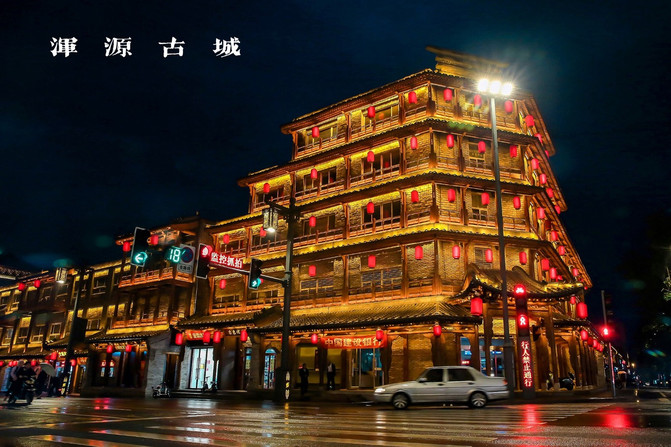
Shenxi Wetland
As the sunset was approaching, we arrived at the Shenxi Wetland Park. The water here is rippling, fish are swimming in the shallow water, and wild geese are flying across the sky. The unique scenery of the northern water town is really unforgettable.
Waiting for the sunset here was an important part of our itinerary. We were worried that the weather would be bad and we couldn’t see the sunset as expected. Fortunately, the weather improved in the afternoon.
Soon, the sunset glow dyed the sky and the wetland red, and everything in the world instantly turned golden. The sunlight on the water was like many golden and silver needles, swaying with the water waves.
Quickly, the sun began to set in the west, getting smaller and smaller from a semi – circle. I stared at it until it disappeared on the horizon.
The sunset glow dyed the sky red. The gorgeous water surface, the swaying reeds, and the cool evening breeze were so beautiful. As the sky gradually darkened, we started our journey back.
Ancient City of Hunyuan
The ancient city of Hunyuan has long and quiet streets and deep courtyards. The state yamen is well – arranged and exquisitely structured. It is located on the Yong’an West Street in the county town. It was initially built in the Jin Dynasty, and the existing buildings were constructed under the supervision of Zhang Pu, the assistant magistrate of the state, in the seventh year of the Hongwu period of the Ming Dynasty, which means it has a history of 645 years.
At night, under the night sky, the ancient city of Hunyuan is filled with twinkling lights. The red lanterns hanging in front of the shops add a touch of charm and mystery to the ancient city. We strolled on the ancient and colorful streets of the city, fully enjoying the various amorous feelings of the ancient city.
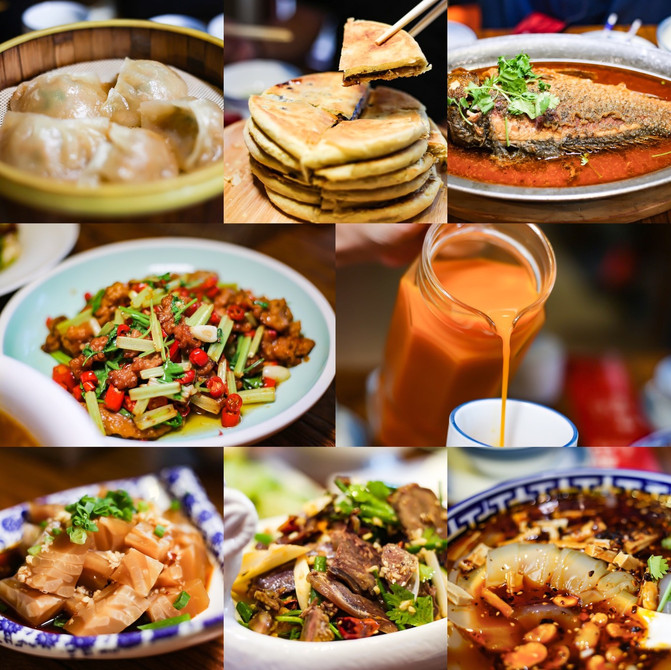
Food in Hunyuan
- Hunyuan Cold Noodles: Hunyuan cold noodles are famous for their good – quality flour and delicious seasonings. Made from high – quality potato starch from the Hengshan area, the noodles are smooth, soft, and translucent, looking like they are about to flow but not really flowing. In the late 1970s, a young woman named Zhao Yueqin started selling cold noodles on a shoulder pole in front of the Shiqiao Non – staple Food Store in Hunyuan. Thanks to her excellent noodle – making skills, her cold noodles became well – known in the city.
- Hunyuan Liangpi Stewed Vegetables: This is a popular home – style dish. Its characteristics can be summarized as hot, fresh, fast, and delicious. It has a history of about 50 – 60 years. The stewed vegetables must be cooked and sold immediately to ensure they are both hot and fresh. The ingredients include potatoes, tofu, pork, Hengshan mushrooms, vermicelli, and seasonal vegetables, which are proportionally mixed and stewed in the pot.
- Astragalus – based Dishes: Hunyuan is rich in resources and is known as the “Hometown of Chinese Astragalus” in the world. You must try the Astragalus health – preserving hot pot. It is served in individual pots and is very nourishing. There is also the Hunyuan Astragalus mutton soup, with mutton as the main ingredient. The cooking method is mainly boiling. The mutton is tender, and the soup is thick, fragrant, and extremely delicious.
- Noodles: Of course, when you come to Shanxi, you can’t miss the noodles. There are various kinds



